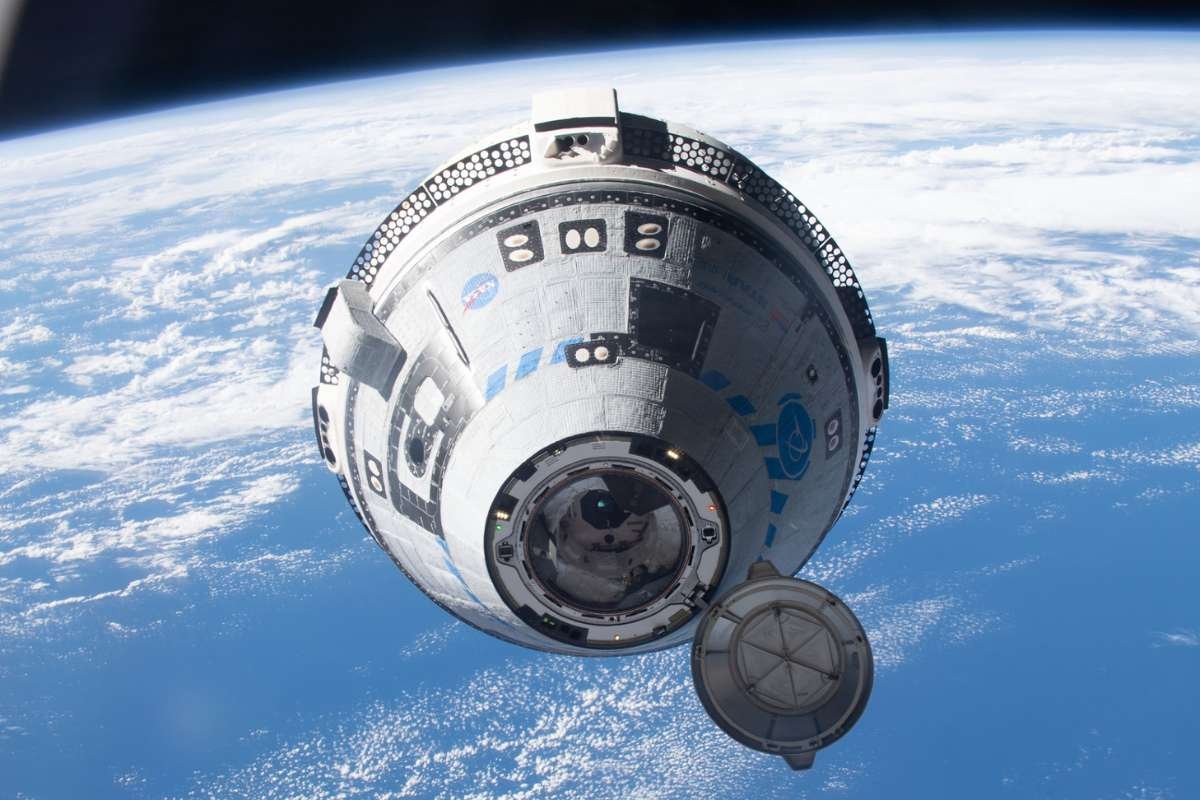Key Points:
- Uncrewed 2026 Mission → Boeing Starliner will fly cargo-only to test propulsion upgrades.
- Contract Cut → NASA reduces guaranteed crewed missions from six to four.
- Past Issues → Thruster failures in 2024 delayed astronaut return, driving cautious approach.
NASA has announced that the next Boeing Starliner mission, scheduled for no earlier than April 2026, will launch without astronauts. Repositioned as a cargo-only mission, Boeing Starliner will serve as a crucial validation test for updated propulsion systems and other safety-critical upgrades following earlier performance issues.
The decision underscores NASA’s cautious approach following the spacecraft’s prolonged technical challenges. The upcoming flight is being viewed not merely as a logistics mission, but as an essential confidence-building step toward ensuring Starliner is fully certified for future crewed operations.
Revised Contract Reduces Guaranteed Crewed Missions
Alongside the mission redesign, NASA and Boeing have agreed to modify their original commercial crew contract. Initially signed in 2014, the agreement promised up to six dedicated crewed missions to the International Space Station. Under the revised terms, that number has now been reduced to four, with the final two missions classified as optional rather than guaranteed.
The contract changes reflect the impact of delays, repeated technical setbacks, and rising program costs. Boeing now anticipates completing only three crewed Boeing Starliner missions following the cargo test before the planned retirement of the ISS in 2030. NASA’s planning indicates a more conservative trajectory for the spacecraft’s role in station operations, especially with reliable alternatives available through SpaceX’s Crew Dragon, which has become the agency’s primary commercial transport vehicle.
Technical Troubles and Astronaut Return Delays Shaped the Decision
The shift to an uncrewed test flight comes after Starliner’s troubled first crewed demonstration in 2024. During that mission, two NASA astronauts successfully reached the ISS but were unable to return using Starliner due to multiple thruster failures and propulsion-system anomalies. The astronauts, originally scheduled for a short 10-day visit, ultimately spent more than nine months in orbit. Their return to Earth required a contingency plan, relying on a separate spacecraft for a safe trip home.
Boeing Starliner itself landed uncrewed months before the astronauts’ eventual return. Following this, Boeing undertook broad engineering reviews and implemented extensive repairs to restore confidence in the spacecraft’s reliability. Engineers have been working through propulsion issues, system redesigns, and incremental testing to ensure the safety of future crew members.
NASA has emphasized the importance of demonstrating full propulsion reliability before resuming astronaut flights. According to program leadership, conducting a cargo-only flight allows the agency to complete certification in a controlled, lower-risk environment while verifying that revised systems behave as intended during dynamic mission phases.
If Boeing Starliner’s 2026 cargo mission performs successfully, NASA plans to reassess the timeline for resumed astronaut flights, ensuring alignment with ISS logistical needs and safety standards. The agency remains committed to maintaining multiple commercial crew options but continues to prioritize astronaut safety above schedule pressures.
Visit The Enterprise World for the most recent information.


















